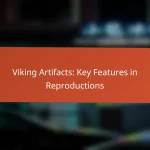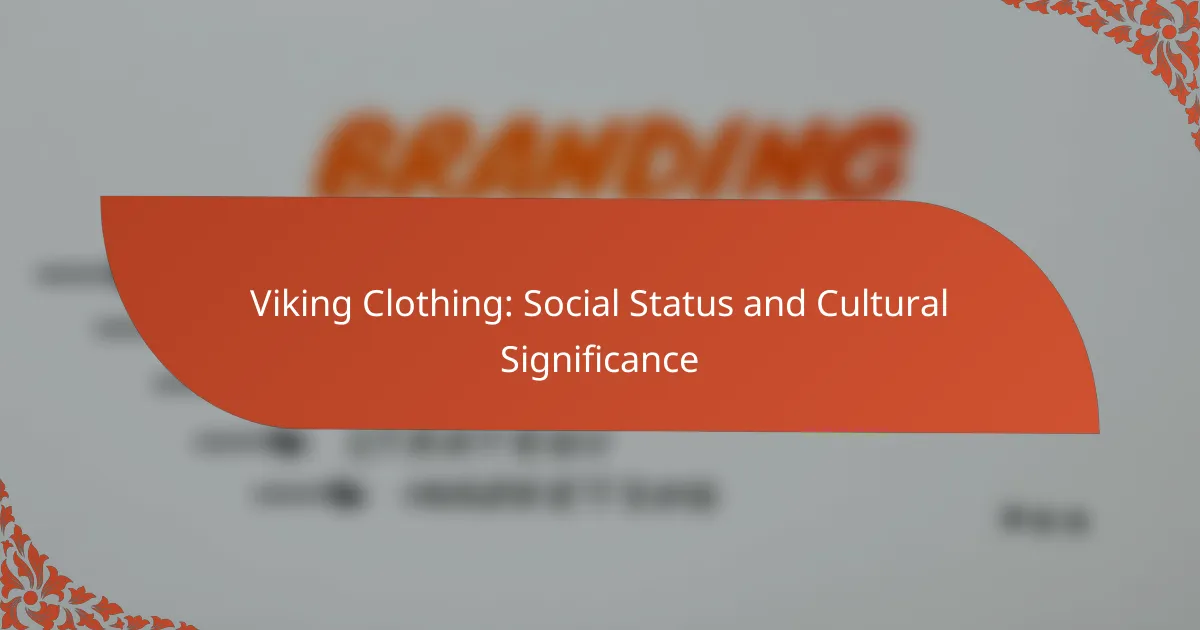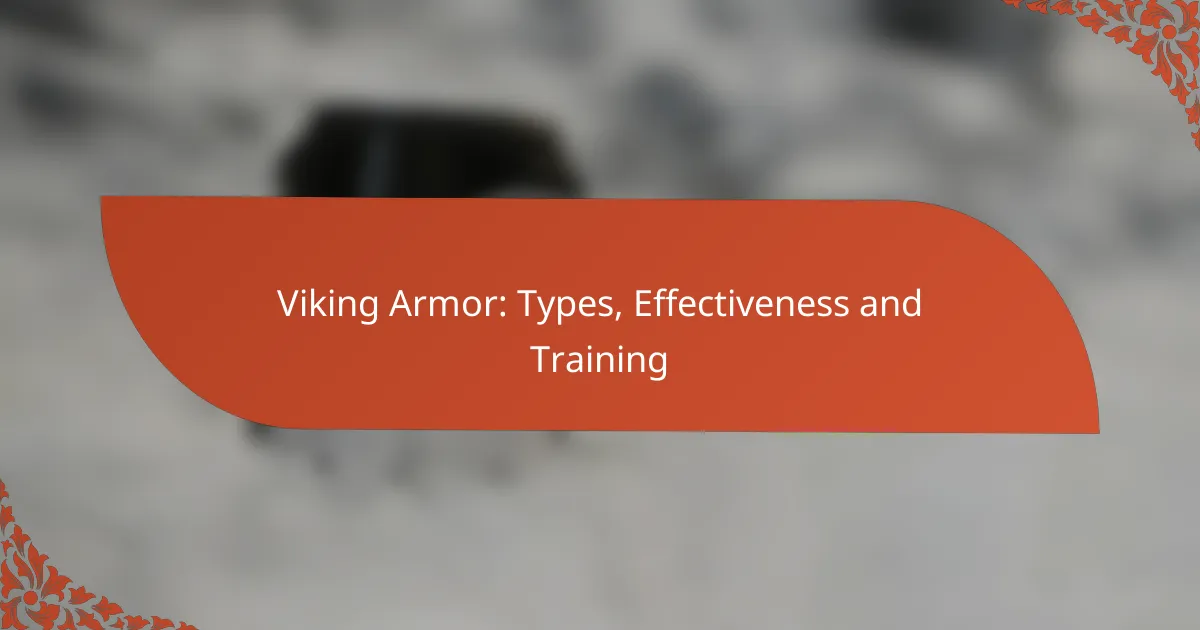Viking clothing served as a vital indicator of social status, with variations in materials, design, and accessories revealing an individual’s wealth and position in society. The garments worn by higher-status individuals were often elaborate and finely crafted, while those of lower-status individuals were simpler and made from coarser materials. Additionally, clothing held deep cultural significance, reflecting identity, values, and regional affiliations within the diverse Viking communities.

How did Viking clothing reflect social status?
Viking clothing was a clear indicator of social status, with differences in materials, design, and accessories reflecting one’s wealth and position within society. Higher-status individuals wore more elaborate and finely crafted garments, while lower-status people had simpler attire made from coarser materials.
Materials used in clothing
The materials used in Viking clothing varied significantly based on social class. Wealthy Vikings often wore garments made from high-quality wool, linen, and even silk, which was imported through trade. In contrast, lower-status individuals typically wore clothing made from rougher wool or animal hides, which were more accessible and affordable.
Natural dyes were also used to color fabrics, with richer hues indicating higher status. For example, bright colors like red and blue were more expensive to produce, making them a luxury for the elite.
Design variations by class
Design variations in Viking clothing were pronounced between different social classes. Nobles and wealthy merchants wore intricately designed tunics and cloaks, often embellished with embroidery or decorative brooches. These garments were tailored to fit well and often featured longer lengths and more layers.
On the other hand, lower-class individuals wore simpler, more functional designs. Their clothing was typically unadorned and designed for practicality, allowing for ease of movement during labor-intensive tasks.
Accessories indicating rank
Accessories played a significant role in signaling a Viking’s social status. Wealthy individuals often adorned themselves with jewelry made from precious metals and stones, including brooches, rings, and necklaces. These items were not only decorative but also served as symbols of wealth and power.
In contrast, lower-status individuals had limited access to such accessories, often wearing simpler items made from less expensive materials. The presence or absence of specific accessories could quickly communicate one’s rank within Viking society.
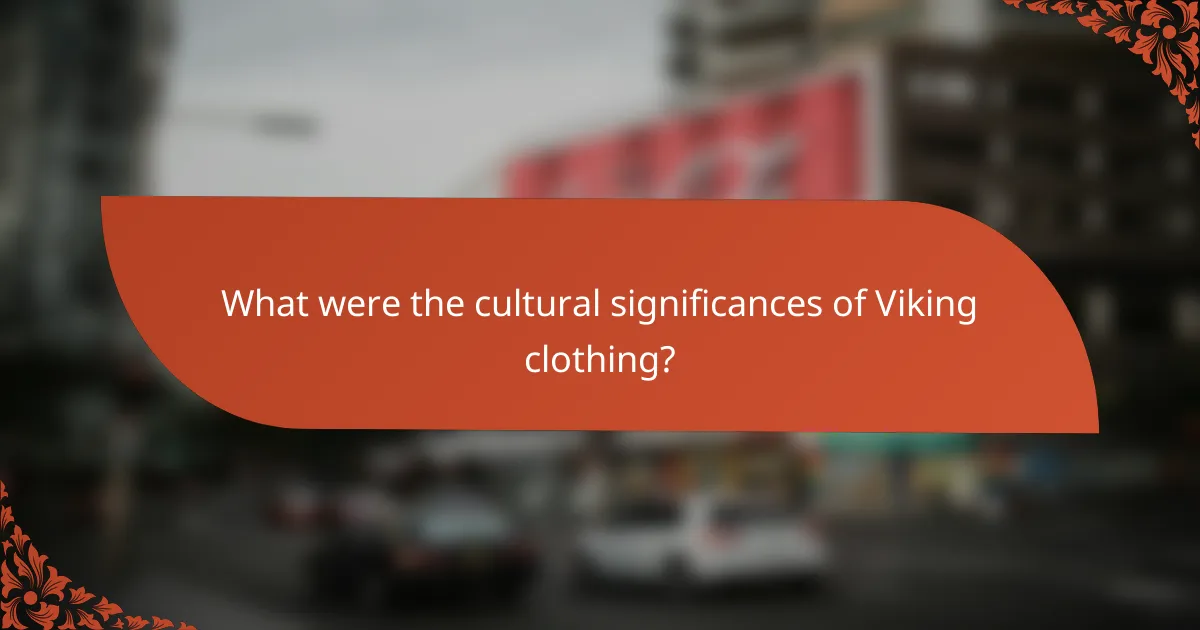
What were the cultural significances of Viking clothing?
Viking clothing held deep cultural significance, reflecting social status, identity, and values within their society. The materials, colors, and styles worn by individuals indicated their rank, occupation, and even regional affiliations.
Symbolism of colors and patterns
Colors and patterns in Viking clothing were not merely aesthetic choices; they conveyed important social messages. For instance, bright colors like red and blue were often associated with higher social status, while earth tones were more common among lower classes. Patterns, such as intricate braids or embroidery, could signify regional identity or personal achievements.
Specific colors had distinct meanings as well. For example, green was often linked to fertility and prosperity, while black could symbolize mourning or loss. Understanding these associations can provide insight into the wearer’s background and social standing.
Religious and spiritual implications
Viking clothing also carried religious and spiritual significance, often incorporating symbols and motifs related to their beliefs. Items like amulets or pendants featuring Norse gods were commonly worn to invoke protection or favor from deities. This practice underscored the connection between daily life and spirituality in Viking culture.
Furthermore, certain garments were reserved for specific rituals or ceremonies, emphasizing their importance in religious practices. For example, a warrior might wear a particular cloak during a battle to honor Odin, reflecting the intertwining of faith and identity in their clothing choices.
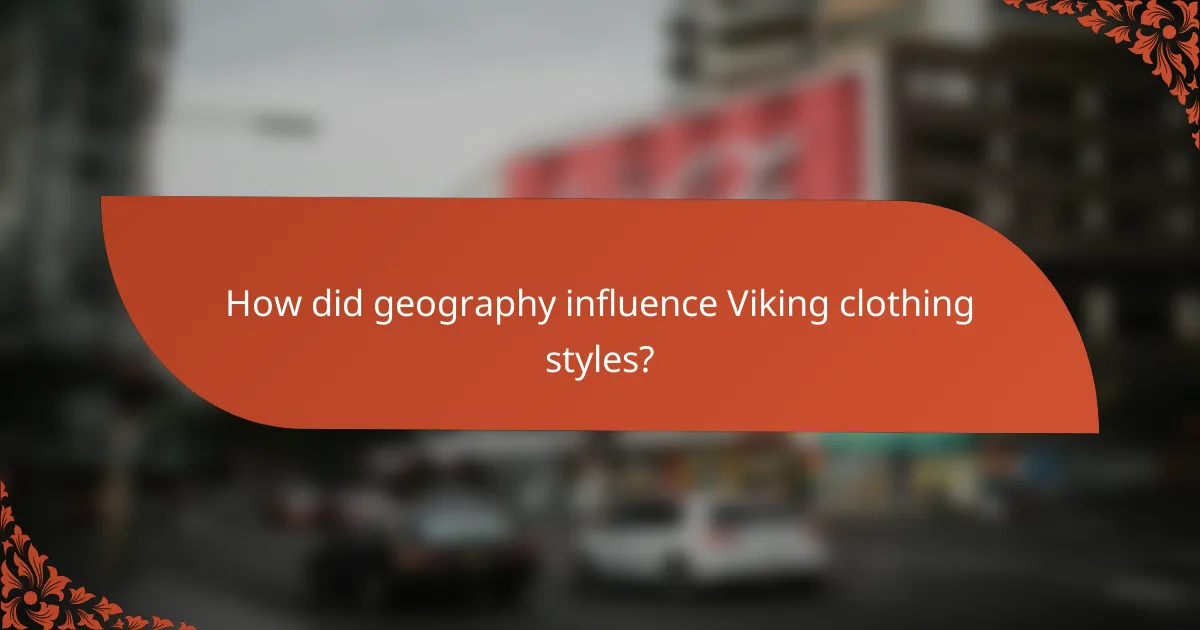
How did geography influence Viking clothing styles?
Geography significantly shaped Viking clothing styles, as the availability of materials and climate conditions varied across regions. This led to distinct clothing adaptations that reflected local resources and environmental needs.
Regional variations in materials
Vikings utilized different materials based on their geographic location. In coastal areas, wool from sheep was commonly used, while fur from animals like seals and foxes was favored in northern regions for added warmth. Inland communities often relied on linen, which was more accessible due to local agriculture.
The choice of materials also indicated social status; wealthier individuals could afford finer fabrics and intricate designs, while those of lower status wore simpler, more functional clothing. This variation in materials contributed to a rich tapestry of Viking culture across different regions.
Climate adaptations in clothing
Viking clothing was designed to adapt to the diverse climates of Scandinavia. In colder areas, layered garments made from wool and fur provided insulation, while lighter linen tunics were suitable for milder weather. This layering technique allowed for flexibility, enabling Vikings to adjust their attire according to temperature changes.
Additionally, accessories such as cloaks and hoods were common in colder climates to protect against harsh winds and rain. These practical adaptations not only ensured comfort but also showcased the Vikings’ resourcefulness in utilizing their environment for survival.
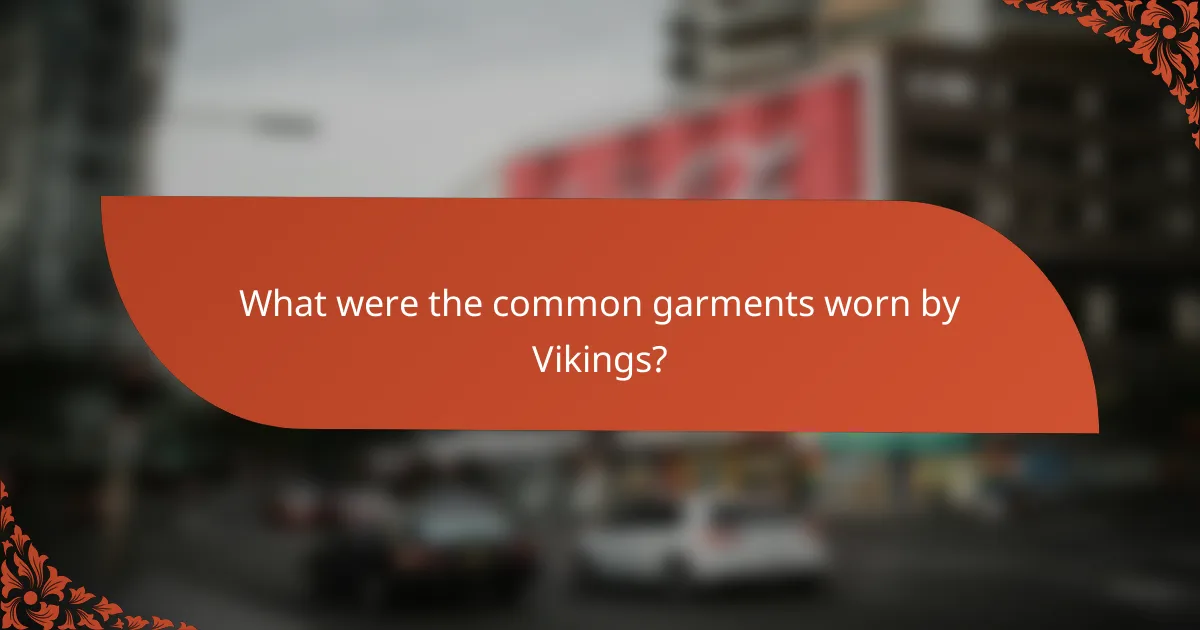
What were the common garments worn by Vikings?
Vikings commonly wore garments such as tunics, trousers, cloaks, and various types of footwear and headgear. These clothing items were not only practical for their lifestyle but also reflected their social status and cultural identity.
Types of tunics and trousers
Tunics were the primary garment for both Viking men and women, typically made from wool or linen. Men’s tunics were often knee-length, while women’s tunics extended to the ankles, sometimes layered with an apron dress for added style.
Trousers, or breeches, were worn by men and were usually fitted and made from wool or linen. They varied in length, with some reaching the ankle and others stopping at the knee, depending on the season and activity.
Outerwear and cloaks
Vikings wore cloaks for warmth and protection against the elements, often fastened with a brooch at the shoulder. These cloaks were typically made from wool and could be lined with fur for additional insulation during colder months.
Outerwear also included jackets or coats, which were usually longer and offered more coverage. The materials used were similar to those of tunics, emphasizing warmth and durability.
Footwear and headgear
Footwear for Vikings included simple leather shoes or boots, designed for comfort and practicality. These shoes were often made from animal hides and could be laced or slip-on styles, suitable for various terrains.
Headgear varied from simple woolen caps to more elaborate helmets, especially among warriors. Women often wore headscarves or hoods, which served both functional and decorative purposes, reflecting their social status and regional styles.

How did Viking clothing evolve over time?
Viking clothing evolved significantly from the early medieval period to the late Viking Age, influenced by various factors such as climate, available materials, and cultural exchanges. The transition from simple garments to more elaborate outfits reflected changes in social status and interactions with other cultures.
Influence of trade and contact
Trade and contact with other cultures played a crucial role in the evolution of Viking clothing. As Vikings engaged in trade across Europe and beyond, they encountered different textiles, styles, and fashion elements, which they incorporated into their own attire. For instance, silk from the East became a symbol of wealth and was often worn by the elite.
Additionally, the introduction of new materials, such as linen and wool blends, allowed for greater variety and comfort in clothing. This exchange not only enriched Viking wardrobes but also signified social status, as those who could afford imported goods often displayed them prominently.
Changes in fashion trends
Fashion trends among Vikings shifted over time, reflecting both practicality and social hierarchy. Early Viking clothing was primarily functional, designed for durability and warmth, but as time progressed, aesthetics became increasingly important. The use of vibrant dyes and intricate patterns became popular, particularly among the wealthy.
Accessories also evolved, with items like brooches and belts becoming fashionable. These embellishments not only served practical purposes but also indicated the wearer’s status within Viking society. Overall, the evolution of clothing trends among Vikings illustrates a blend of practicality and the desire for self-expression through fashion.
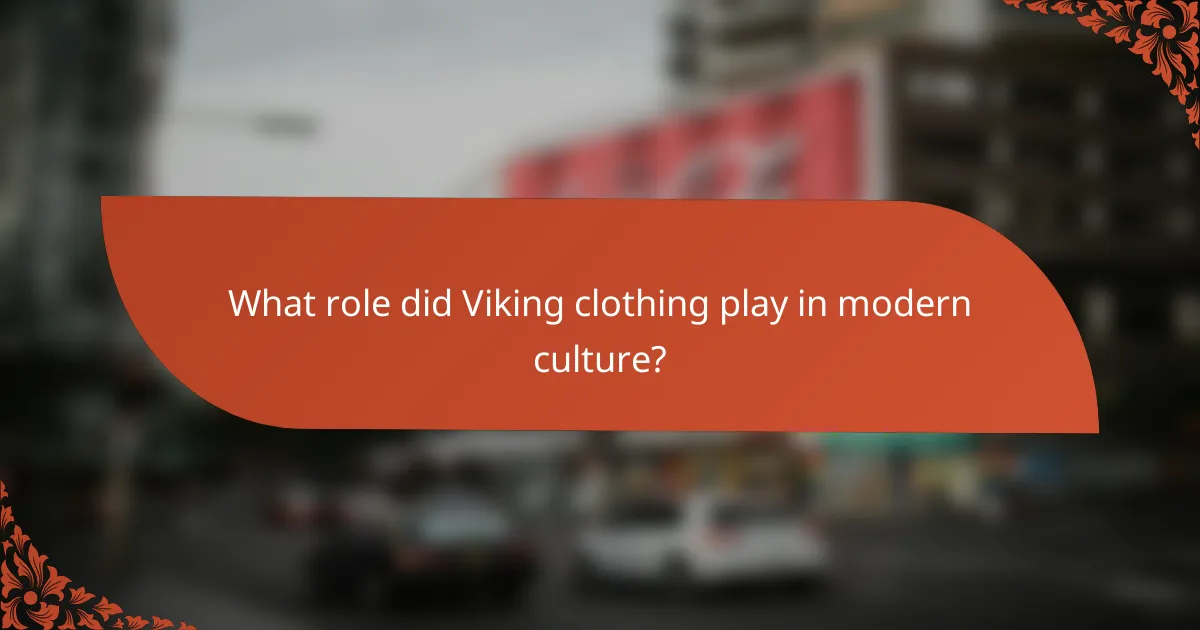
What role did Viking clothing play in modern culture?
Viking clothing has significantly influenced modern culture, particularly in fashion and media. Its distinctive styles and materials reflect a blend of historical authenticity and contemporary trends, showcasing the enduring legacy of Viking aesthetics.
Revival in contemporary fashion
The revival of Viking clothing in contemporary fashion is evident in various clothing lines and collections that draw inspiration from Norse designs. Many brands incorporate elements such as tunics, cloaks, and intricate patterns reminiscent of Viking attire, appealing to those interested in historical themes.
Fashion events and festivals often feature Viking-inspired outfits, allowing designers to showcase their interpretations of these traditional garments. This revival not only celebrates Viking heritage but also promotes a sense of community among enthusiasts of Norse culture.
When exploring Viking-inspired fashion, consider the use of natural materials like wool and linen, which were commonly used in the past. Look for garments that feature authentic details, such as embroidery or metal clasps, to enhance the historical connection.





